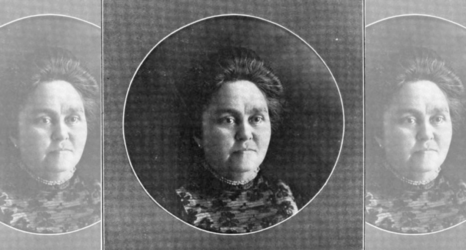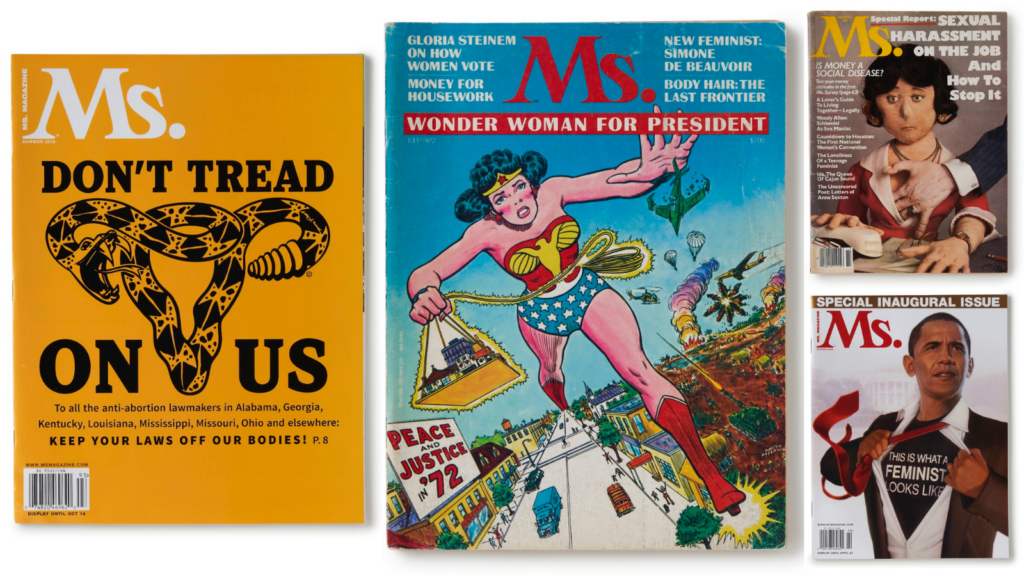
From calling attention to the endless labor performed by women in the home, to being the first magazine to put the first female speaker on its cover, Ms. covers allowed the magazine to make a statement on newsstands—and bring feminist conversations into the mainstream.
In honor of Women’s History Month, here are our picks of 10 of the magazine’s most impactful covers.
1. Spring 1972: ‘The Housewife’s Moment of Truth’
The Spring 1972 issue was a one-shot preview published by New York magazine. For the very first cover, the magazine’s founding editors chose an image of a many-armed woman resembling many Hindu goddesses—her skin blue like Shiva and Kali and her arms many like that of Durga.
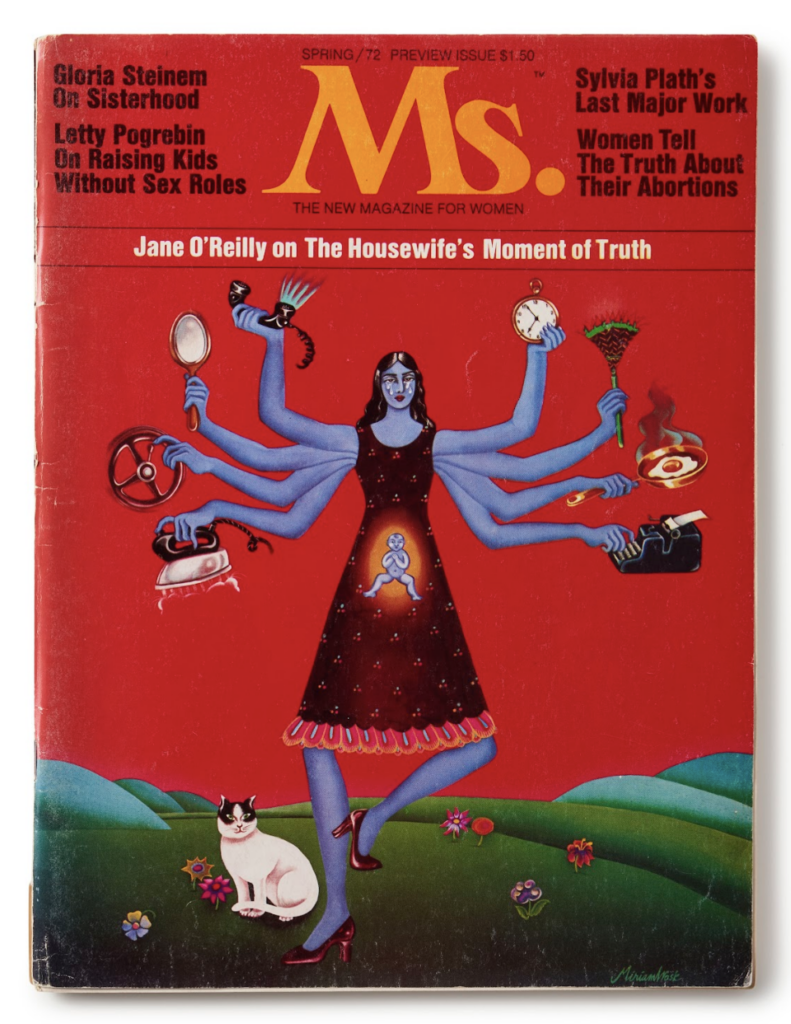
Painted by Miriam Wosk, her hands hold symbols of women’s many tasks—a cooking spoon, an iron, a car wheel—representing the ideal of the multitasking “housewife.” The response to this first issue was overwhelming and the bags of mail received by the editors was a sign that they’d created something that resonated with their readership.
The Ms. Spring 2021 cover revisited this classic cover, depicting a COVID-era employed mother—this time juggling two kids, both quarantined at home; a mask and a vaccine; a broom, representing the lion’s share of home labor women have picked up since the beginning of the pandemic; Zoom calls; and more.

The cover was conceived by Ms. art director Brandi Phipps, who commissioned the project to D.C.-based artist Ashley Jaye Williams. Ms. digital editor Roxy Szal spoke to Phipps and Williams to see what it was like to pick up Wosk’s baton five decades later, their hopes for the cover’s impact on viewers, favorite Ms. covers over the years, and more.
2. July 1972: ‘Wonder Woman For President’
Having been featured on the cover of Ms. five times over the past five decades, Wonder Woman has become synonymous with Ms., serving as the embodiment of women’s empowerment. The Amazonian warrior princess challenged the traditional archetype of the male superhero and allowed young girls and women to realize their own strength.
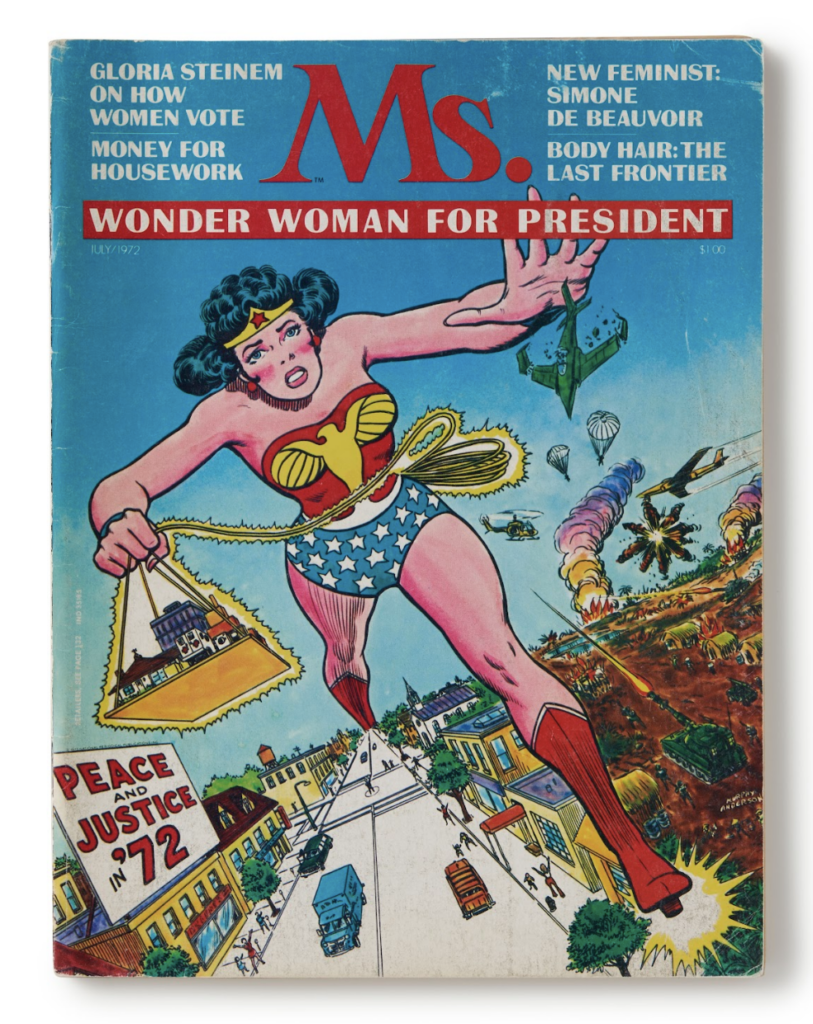
In her cover story, Joanne Edgar wrote, “Wonder Woman captured the Amazonian spirit of strength and self-sufficiency, but added the peacefulness and revulsion toward killing that have culturally distinguished women from men.”
3. January 1973: ‘The Ticket That Might Have Been’
This cover is bittersweet, considering the fact that 50 years later, we’ve only recently elected the first woman vice president and have yet to elect a woman president. In 1973, Shirley Chishom, the first Black woman elected to Congress, became the first Black woman to seek the presidential nomination. At the same Democratic National Convention, feminists pushed the party to select Sissy Farenthold, who had just run for governor of Texas, as the Democratic nominee’s running mate. Neither woman made it on the ticket.
That November, George McGovern and his running mate Sargent Shriver lost to Richard Nixon and Spiro Agnew.
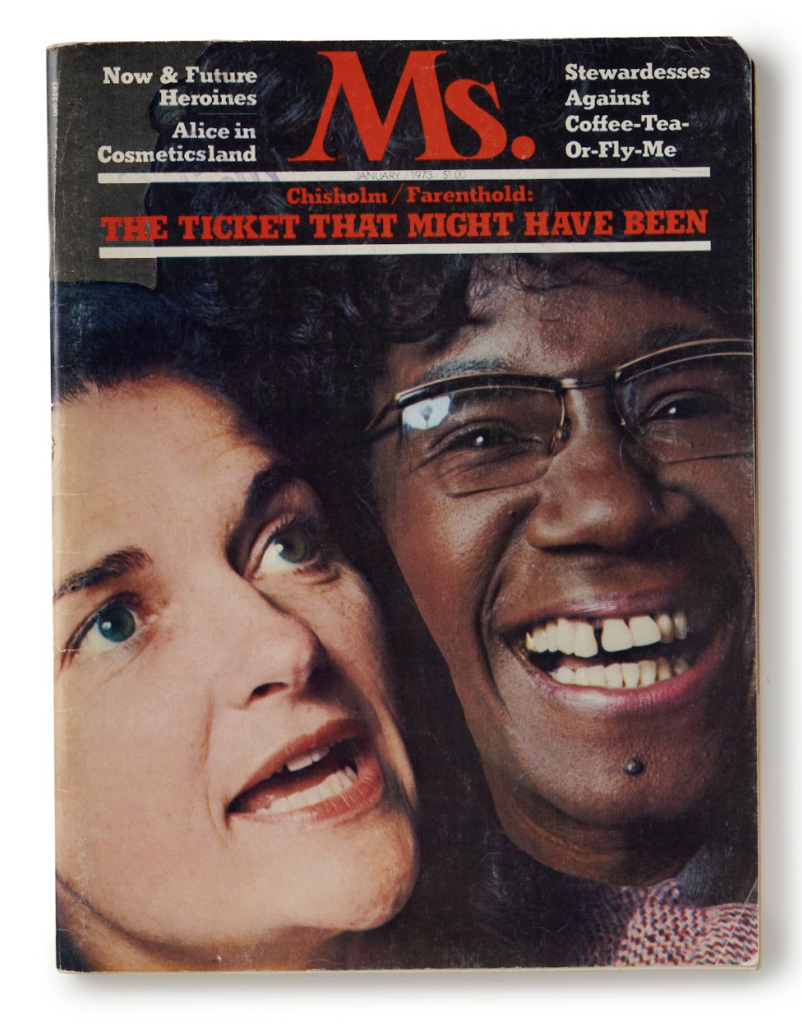
4. November 1977: ‘Sexual Harassment on the Job—And How to Stop it’
When planning this issue, Ms. editors worried it would be too graphic to use actual human figures acting out sexual harassment in the cover image—and could result in newsstands pulling the issue from their shelves. The choice to instead use puppets was ingenious. And starting the conversation around workplace sexual harassment in the 1970s was groundbreaking, preceding the Supreme Court’s ruling on sexual harassment by nine years and Anita Hill’s testimony in Justice Clarence Thomas’ Senate hearings by 15 years. The cover was widely awarded, earning honors from both the Society of Illustrators and the Society of Publication Designers for that year.
Its legacy is still felt in the #MeToo and Time’s Up movements.
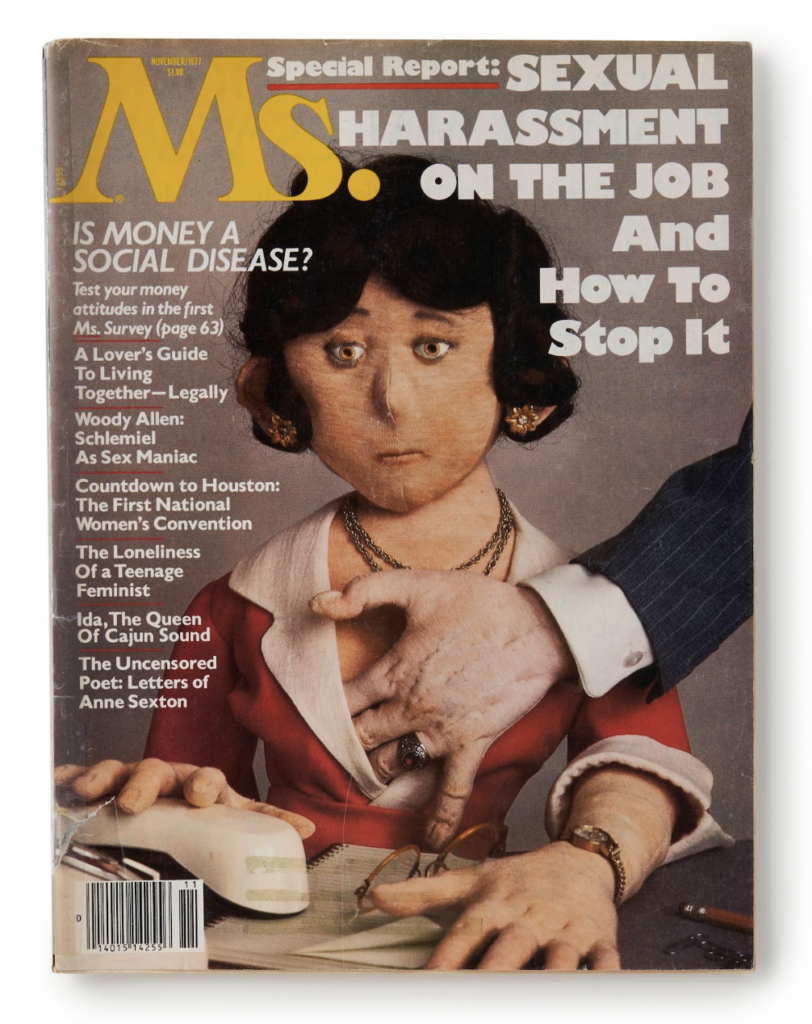
5. January/February 1992: ‘Rage + Women = Power’
Anita Hill is quoted in this issue asking, “How do we turn rage into energy? Through the power of women working together.”
The cover, designed by iconic feminist artist Barbara Kruger, was an ode to women’s anger and outrage following Thomas’ confirmation by an all-male Senate Judiciary Committee, despite Hill’s credible testimony to the Senate Judiciary Committee during the confirmation hearings for Clarence Thomas. Women’s outrage turned 1992 into the Year of the Woman—when a record number of women won seats in Congress.
This cover is now featured on the website of the Museum of Modern Art in New York. The back cover, also designed by Kruger, reads, “We will no longer be seen and not heard.”
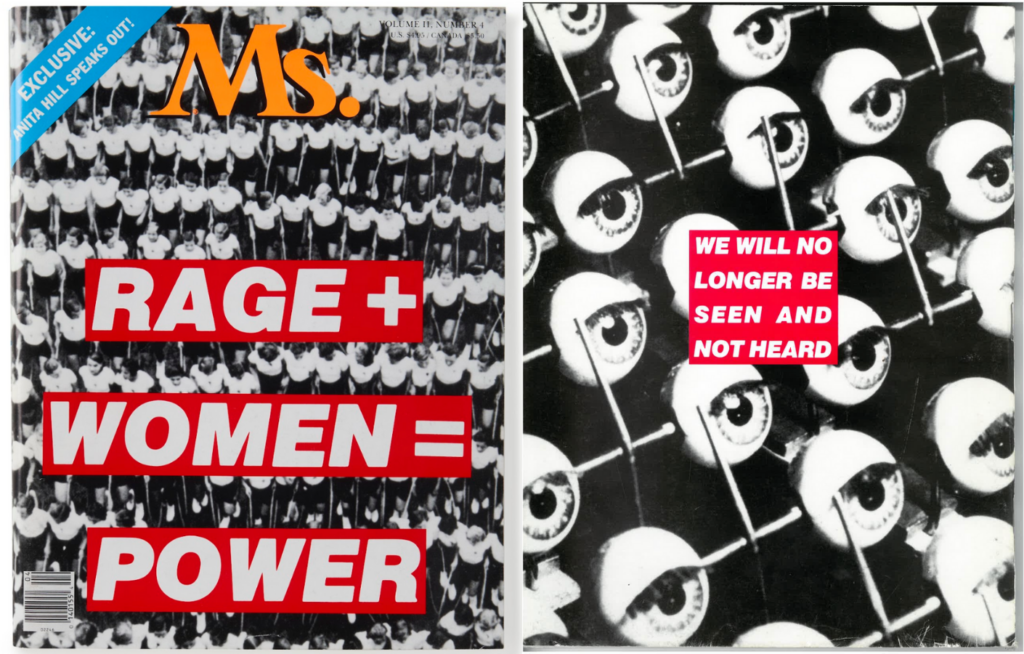
6. September/October. 1994: ‘No More! Stopping Domestic Violence’
Until 1994, women had little recourse when they were victims of domestic violence.
In 1994, Congress passed the first Violence Against Women Act. Ms. published a shocking and heartbreaking cover that listed the names, ages and locations of just some of the thousands of women and girls who had been murdered by former or current male partners in the four years before its publication. The magazine cover served as both a tribute to the women who had been killed and a visual demonstration of the real impact of domestic violence.

7. Winter 2007: ‘This is What a Speaker Looks Like’
Nancy Pelosi has been featured on the Ms. cover nearly as many times as Wonder Woman. The first time celebrated her history-making selection as first woman speaker of the House in 2007—the highest U.S. political office held by a woman until Kamala Harris was elected vice president.
But although it was tradition for national news magazines, particularly Time, to put newly elected speakers on their covers, Ms. was shockingly the only national magazine to run a Pelosi cover when she first took the gavel.
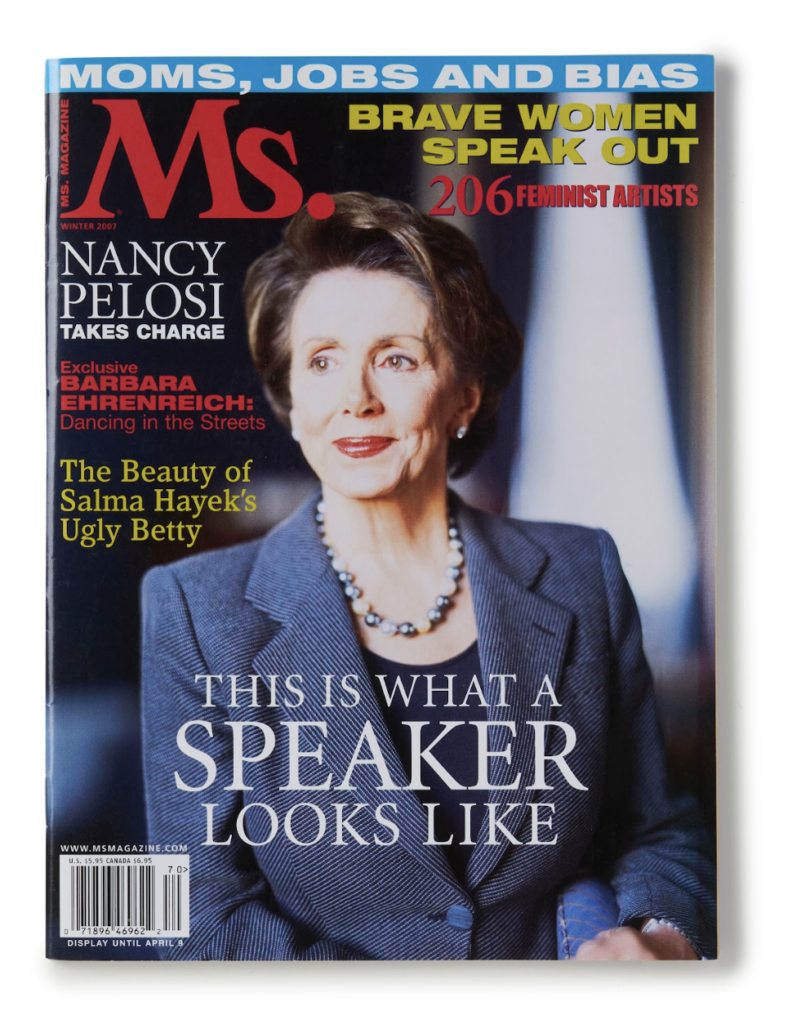
8. Winter 2008: ‘Feminist Obama’
Barack Obama’s inauguration as the first Black U.S. president was a landmark moment in the country. Because he proudly and publicly identified as a feminist, Obama seemed to represent a superhero in Ms. staffers’ eyes as he entered office for a term that we felt was filled with promise.
In an interview with Democracy Now, Ellie Smeal, the publisher of Ms., described the cover image, saying, “We wanted to tell the world that he self-identifies as a feminist and that he’s run on the strongest platform of any major party for women’s rights. And we also wanted to capture both the national mood and the feminist mood of high expectations and hope for his presidency.”
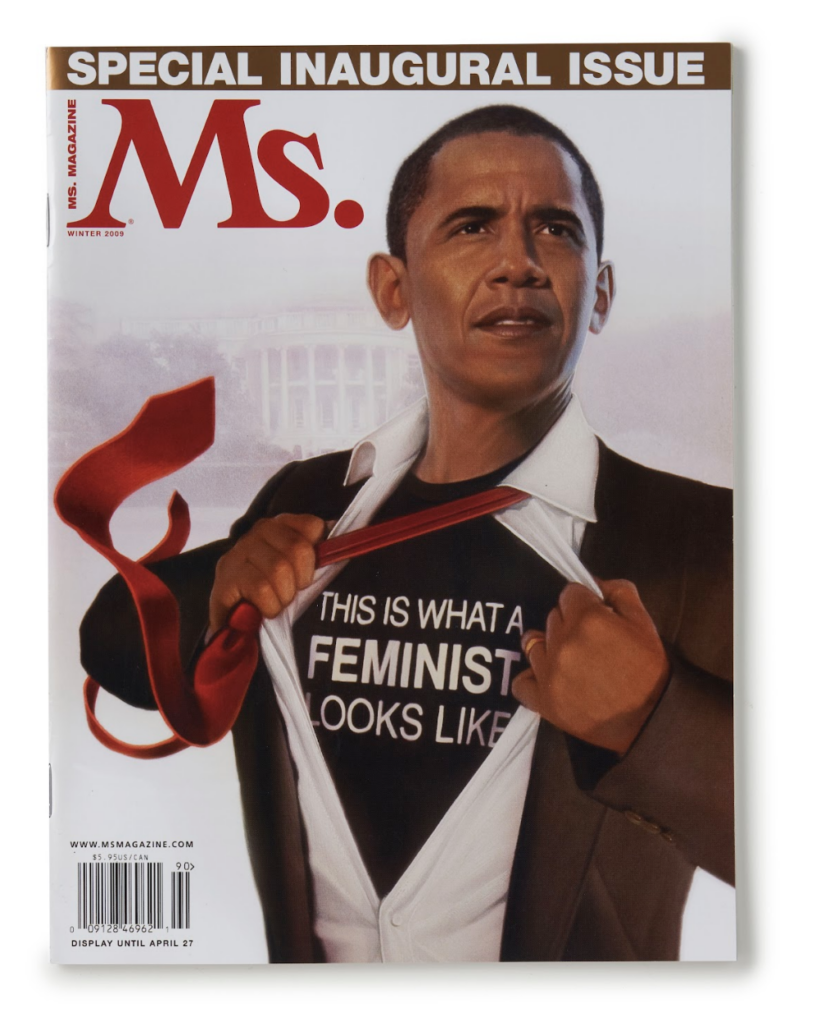
9. Summer 2019: ‘Don’t Tread on Us’
In 2019, pre-Dobbs, seven male-dominated state legislatures made outrageous, unconstitutional attempts to outlaw abortion in their states. This cover, a parody of the Gadsden flag that has been co-opted by Republicans (and was flown widely by those that attacked the Capitol on Jan. 6), reminds the patriarchal lawmakers of these states to keep their laws off women’s bodies. The snake uterus warns that women will strike back—and they did, by protesting these restrictions in droves.
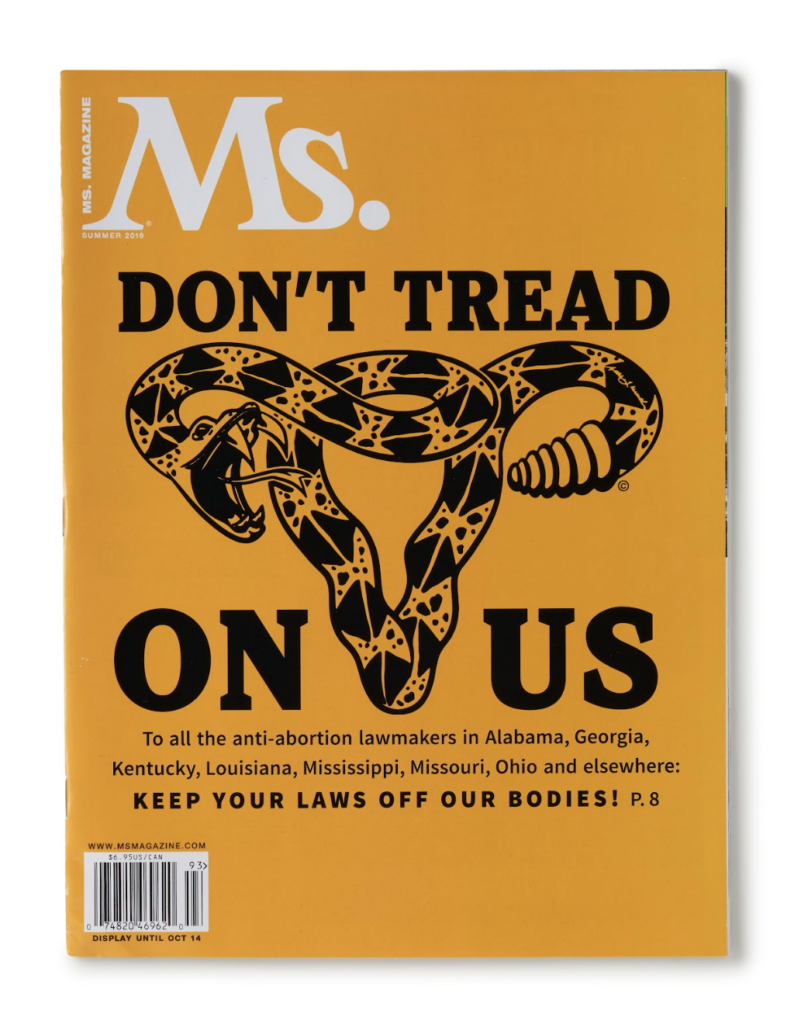
10. Fall 2021: ‘Disappearing Roe‘
Many people in the U.S. believed that the Supreme Court would never come after abortion rights, particularly given the justices’ assurances in their confirmation hearings that they respected the decades of precedent following Roe v. Wade. One of Ms.’ most recent covers, which depicts a disappearing Roe, warned its readers of an imminent doom. It was designed by art director Brandi Phipps in 2021 when the Supreme Court was hearing oral arguments in Dobbs and allowed Texas to enact the notorious SB 8—a law that effectively banned abortions at five weeks.
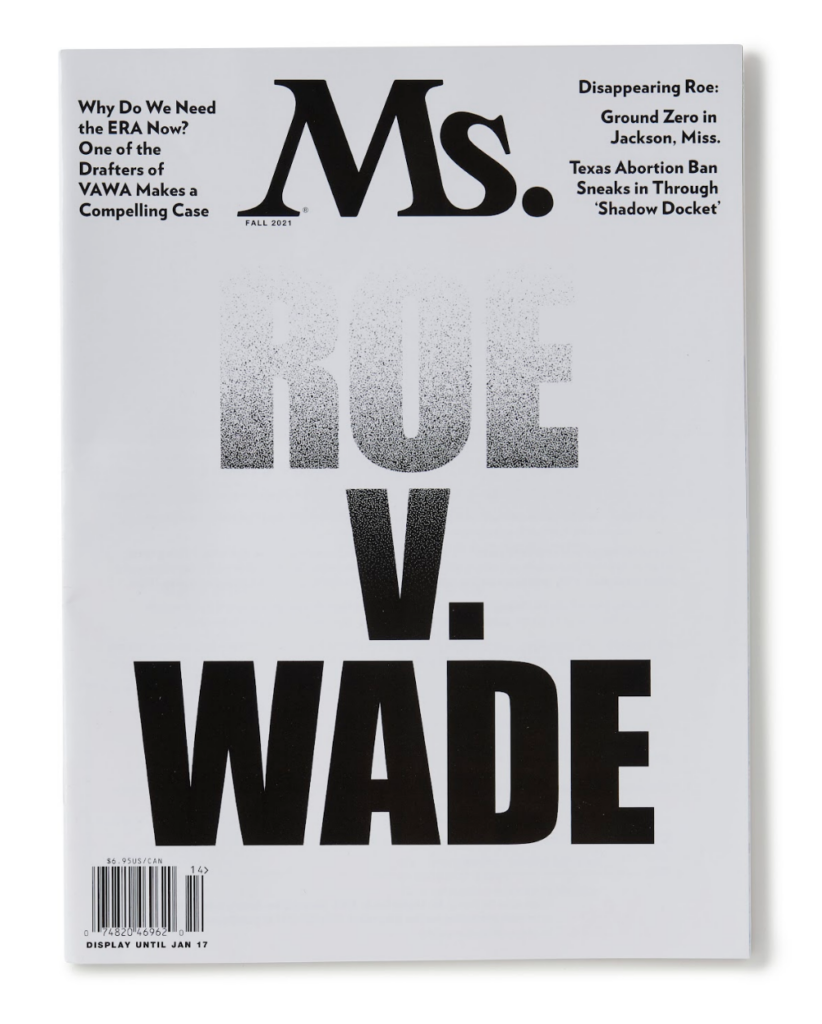
For more iconic, ground-breaking stories like this, order 50 YEARS OF Ms.: THE BEST OF THE PATHFINDING MAGAZINE THAT IGNITED A REVOLUTION (Alfred A. Knopf)—a stunning collection of the most audacious, norm-breaking coverage Ms. has published.

Up next:
U.S. democracy is at a dangerous inflection point—from the demise of abortion rights, to a lack of pay equity and parental leave, to skyrocketing maternal mortality, and attacks on trans health. Left unchecked, these crises will lead to wider gaps in political participation and representation. For 50 years, Ms. has been forging feminist journalism—reporting, rebelling and truth-telling from the front-lines, championing the Equal Rights Amendment, and centering the stories of those most impacted. With all that’s at stake for equality, we are redoubling our commitment for the next 50 years. In turn, we need your help, Support Ms. today with a donation—any amount that is meaningful to you. For as little as $5 each month, you’ll receive the print magazine along with our e-newsletters, action alerts, and invitations to Ms. Studios events and podcasts. We are grateful for your loyalty and ferocity.





